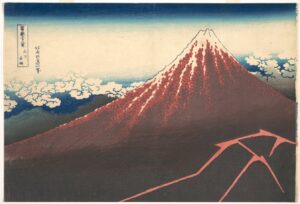A comprehensive guide: artist signatures
If the artist’s hand is important to you, then be thoughtful of your artist’s signature.
Your signature can be the same one you use to sign any other document, or you can make a creative ‘tag’ just to sign artwork. Ultimately, it’s just important to sign your work. This establishes provenance and helps you feel closer to your viewers or buyers and vice versa.
*Of course, many art forms do not require signatures, but this post is for traditional painters.
Introduction to Artist Signatures: An artist’s signature is a unique mark or symbol used to sign their artwork. It serves as a personal identifier, indicating ownership and authenticity. Artist signatures can be found on various types of artwork, including paintings, sculptures, drawings, prints, and more. Developing a distinctive signature is an important part of an artist’s identity and can enhance the value and recognition of their work.
Purpose and Importance
Artist signatures serve several purposes:
- Authentication: Signatures provide proof of the artist’s authorship and validate the artwork’s authenticity.
- Ownership: The signature indicates that the artist claims ownership of the artwork.
- Recognition: A consistent and recognizable signature helps collectors, galleries, and viewers identify the artist’s work.
- Historical Documentation: Signatures can aid in tracing an artist’s career and establishing provenance.
Types of Signatures
Artists can choose from various types of signatures, depending on their personal style and preferences. Here are some common types:
- Full Name: Artists may sign their complete name, usually in legible handwriting. This type of signature is suitable for artists who want to be easily identifiable.
- Initials: Using initials or a monogram is a popular choice for artists. It can be particularly effective for longer or complex names.
- Symbol or Mark: Some artists create a unique symbol or mark that represents their identity. This can be an abstract design or a stylized representation of their name.
- Pseudonym: Artists may sign their work using a pseudonym. This means you come up with a different name altogether. There are lots of artists who use pseudonyms. This approach can be useful when an artist wants to separate their artistic and identities. I don’t recommend this for painters who want to sell their work because our first sales usually come from collectors who believe in us. After all, they find you through your website or school network under your formal name. It can be difficult to build up a following under a pseudonym for a painter who sells work.
Placement and Size
The placement and size of the signature are important considerations. Here are some guidelines:
- Placement: Signatures are commonly positioned in the lower right-hand corner of the artwork, as viewers often start looking at a piece from the left. However, artists can choose any location that suits their style.
- Size: Signatures should be legible but not overpowering. Artists typically sign their work with a proportionate size to the overall composition, ensuring it does not distract from the artwork itself.
Consistency and Evolution
Maintaining consistency in the signature is essential for recognition and authenticity. However, an artist’s signature may evolve. Here are some points to consider
Practice. Artists often experiment with different signature styles before settling on one that feels authentic and represents their identity.
Artists may refine their signatures throughout their careers, adapting them to changes in their style or personal preferences. It’s important to keep some recognizable elements consistent to maintain continuity.
Materials and Techniques:
Artists can sign their work using various materials and techniques. Here are some commonly used methods:
- Handwriting: Signing with a pen or brush using ink or paint is a traditional and straightforward approach.
- Embossing: Artists can create a raised or stamped signature using embossing tools or a seal. This method is common for printmaking.
- Digital Signatures: With the rise of digital art, artists may incorporate digital signatures. You can add them directly into your artwork or add them during the printing process.
Additional Considerations:
- Legibility: While artistic flair is encouraged, it’s important to ensure the signature remains legible.
- Contrast: Signatures should have sufficient contrast against the background to be easily visible.
- Permanence: Artists should choose materials that are archival. They need to be resistant to fading or deterioration over time.
What artists had very unique signatures?
There have been many artists throughout history who had unique and distinctive signatures. Here are a few notable examples:
Vincent van Gogh
Van Gogh’s signature featured his first name, “Vincent,” followed by a distinctive “G” that extended upwards with a long vertical line.
Pablo Picasso
Picasso’s signature often consisted of his last name, “Picasso,” written in bold and capital letters with a flamboyant flair. He frequently incorporated doodles and drawings into his signature as well.
Salvador Dalí
Dalí’s signature was known for its eccentricity. He often signed his name with large, exaggerated capital letters that sometimes resembled surrealistic objects or creatures.

Andy Warhol
Warhol’s signature was typically a combination of cursive and block letters, with the first and last name written separately. He often added illustrations or graphic elements around his signature, such as a dollar sign or a heart.
Jackson Pollock
Pollock’s signature was characterized by its energetic and chaotic style, much like his abstract expressionist paintings. He would often sign his name with looping and jagged lines.
Frida Kahlo
Kahlo’s signature was simple yet distinct. She typically signed her full name, “Magdalena Carmen Frida Kahlo y Calderón,” with a legible, flowing handwriting style.

Keith Haring
Haring’s signature was a unique and recognizable symbol that he developed. It consisted of his initials, “K” and “H,” merged together in a distinctive design that resembled a radiant baby or a crawling figure.
Conclusion: Developing a unique and recognizable artist signature is a vital aspect of establishing an artistic identity. By carefully considering the purpose, types, placement, and techniques involved, artists can create signatures that enhance the value.

If this interests you, check out these related posts.


